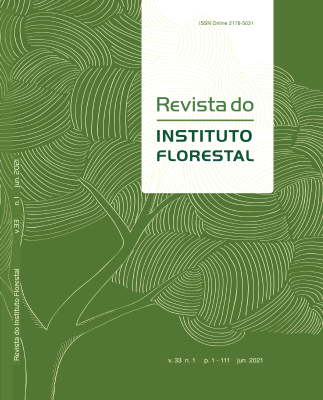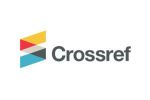EX SITU CONSERVATION: DIAGNOSIS OF THE “GUSTAVO EDWALL” ARBORETUM AND MANAGEMENT RECOMMENDATIONS
DOI:
https://doi.org/10.24278/2178-5031.202133102Keywords:
Germplasm banks, Botanical collection, Floristic inventory, Phytosociology, ManagementAbstract
The arboretum living collections are of great importance among germplasm banks because it preserves genetic material from tree species of different origins in ex situ conditions. The “Gustavo Edwall” Arboretum was implanted in 1914 in the Alberto Löfgren State Park, São Paulo – SP, by Edmundo Navarro de Andrade. The purpose of this study was to document the fora and structure of the arboretum tree community to detect whether the original planting species remaining and if there had enrichment of species from propagules of the natural forests in the surrounding area. In 19,000 m2 of occupied area by the arboretum, trees and palms with PBH ≥ 15 cm were recorded. The species were classifed as native or alien species, and for the last one, among transient alien, potential invader, non-dominant or dominant invader. A total of 829 individuals were recorded in 2018, belonging to 111 species (50% exotic), 89 genres and 38 families. The arboretum houses 32 species from the original planting, but 78 new species were registered, and one is indeterminate. Most of the community results from natural regeneration and/or undocumented further cultivation. The registration of 22 invasive species, which accounts for 27% of the density and 26% of the basal area, deserves attention. Even if almost half of the species are native, the number of invaders regenerating in the area is worrying. The mechanical control of the aliens and bringing back native species of the original planting are recommended, in order to preserve its historical, scientifc and landscape value.
Downloads
References
ANGIOSPERM PHYLOGENY GROUP - APG. 2016. An update of the Angiosperm Phylogeny Group classifcation for the orders and families of fowering plants: APG IV. Botanical Journal of the Linnean Society, v. 181, p. 1-20.
ARZOLLA, F.A.R.D.P. Florística e ftossociologia de trecho da Serra da Cantareira, Núcleo Águas Claras, Parque Estadual da Cantareira, Mairiporã - SP. 2002. 184 f. Dissertação (Mestrado em Biologia Vegetal) - Instituto de Biologia, Universidade Estadual de Campinas, Campinas. Disponível em: <http://www.repositorio.unicamp.br/handle/REPOSIP/315511>. Acesso em: 2 mar. 2019.
______. et al. Composição forística e a conservação de forestas secundárias na Serra da Cantareira, São Paulo, Brasil. Revista do Instituto Florestal, v. 23, n. 1, p. 149-171, 2011.
______. (Coord.). Meio Biótico. In: SÃO PAULO. Governo do Estado. Secretaria do Meio Ambiente. Instituto Florestal. Parque Estadual Alberto Löfgren – Plano de Manejo. São Paulo: Instituto Florestal, 2012. Disponível em: <http://s.ambiente.sp.gov.br/institutoflorestal/Plano_de_Manejo_PE_Alberto_Lofgren_.pdf>. Acesso em: 13 mar. 2021.
BAITELLO, J.B. et al. Estrutura ftossociológica da vegetação arbórea da Serra da Cantareira (SP) – Núcleo Pinheirinho. Revista do Instituto Florestal, v. 5, n. 2, p. 133-161, 1993.
BASE DE DADOS NACIONAL DE ESPÉCIES EXÓTICAS INVASORAS I3N BRASIL. Instituto Hórus de Desenvolvimento e Conservação Ambiental Florianópolis-SC. Disponível em: <http://i3n.institutohorus.org.br/www>. Acesso em: 26 jun. 2018.
BERZAGHI, C. et al. O Instituto Florestal – São Paulo – Origem e Evolução. São Paulo, 1973. 65 p.
BRASIL. Lei Federal Nº 9.985, de 18 de julho de 2000. Regulamenta o art. 225, § 1o, incisos I, II, III e VII da Constituição Federal, institui o Sistema Nacional de Unidades de Conservação da Natureza e dá outras providências. Disponível em: <http://www.planalto.gov.br/ccivil_03/leis/l9985.htm>. Acesso em: 31 jul. 2019.BRASIL. MINISTÉRIO DO MEIO AMBIENTE.
Lista ofcial de espécies brasileiras ameaçadas de extinção. Portaria no 443, de 17/dez/2014, do Ministério do Meio Ambiente. Disponível em: <http://pesquisa.in.gov.br/imprensa/jsp/visualiza/index.jsp?data=18/12/2014&jornal=1&pagina=110&totalArquivos=144>. Acesso em: 20 jan. 2019.
CARDIM, R. Amargo é o remédio: porque defendo retirar as palmeiras invasoras do Parque Trianon. In: Árvores de São Paulo, 14/set/2017. Disponível em: <https://arvoresdesaopaulo.wordpress.com/2017/09/14/amargo-e-o-remedio-porque defendo-retirar-as-palmeiras-invasoras-do-parque trianon/>. Acesso em: 22 jan. 2020.
DURIGAN, G. et al. Control of invasive plants: ecological and socioeconomic criteria for the decision making process. Nature Conservation, v. 11, n. 1, p. 23-30, 2013.
EMPRESA PAULISTA DE PLANEJAMENTO METROPOLITANO S. A. - EMPLASA. Ortofoto
digital (SF-23-Y-C-III-4-SO). São Paulo,2010/2011. Resolução aproximada de um metro.
FIDALGO, O.; BONONI, V.L.R. Técnicas de coleta, preservação e herborização de material botânico. São Paulo: Manual do Instituto de Botânica, n.4, 1984.
FLORA DO BRASIL 2020 EM CONSTRUÇÃO. Jardim Botânico do Rio de Janeiro. Disponível em: <http://foradobrasil.jbrj.gov.br>. Acesso em: 26 jun. 2018.
FREITAS, W.K. de; MAGALHÃES, L.M.S. Métodos e Parâmetros para Estudo da Vegetação com Ênfase no Estrato Arbóreo. Floresta e Ambiente, [s.l.], v. 19, n. 4, p. 520-540, 2012. Fap UNIFESP (SciELO). Disponível em: <http://dx.doi.org/10.4322/foram.2012.054>. Acesso em: 15 fev. 2021.
GALETTI M.; FERNANDEZ J.C. Palm heart harvesting in the Brazilian Atlantic forest: changes in industry structure and the illegal trade. Journal of Applied Ecology, v. 35, p. 294-301, 1998.
















